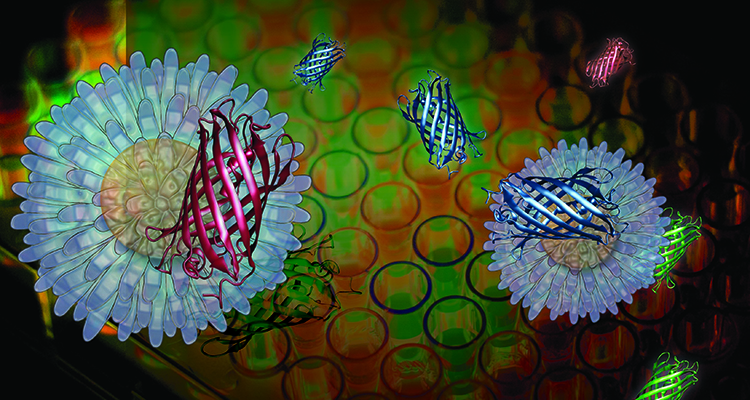In October 2014, Google announced it was working on an innovative nanotechnology-based approach to avoiding and managing disease. The idea was to create a pill that would deliver magnetic, functionalized nanoparticles from the gut to the bloodstream. Once there, they would circulate — presumably for days, or longer — picking up biomarkers of disease along the way. The particles would then be remotely interrogated directly by the patient, perhaps using a wrist-mounted monitor. In effect, the plan was to create the ultimate in wearable tech: a personal device that could give you up-to-the-minute information on health and wellness, much as wrist-worn devices provide feedback on fitness today.
Google’s nanosensor concept is certainly audacious. Its success though will depend on overcoming a number of challenges — not least, addressing potential risks. Based on what is currently known about nanoparticle behaviour, the technology faces a plethora of possible health and environmental challenges. Failure to address these could leave the company with a non-starter on its hands. Yet the probability of causing harm is not the only risk that could prevent these nanosensors from becoming a reality. In the expanded list of potential risks, there is also the chance of outmoded or overly restrictive regulations blocking progress; or the possibility of investor ambivalence, consumer suspicion, or social media backlash. These hint at a much larger and murkier risk landscape that emerging technologies will have to navigate to be successful.
Google’s nanoparticle sensors are indicative of a growing number of technologies that are facing increasingly complex risk-related challenges. Recently, the Future of Life Institute awarded close to US$7 million for research aimed at ensuring the robust and beneficial development of artificial intelligence — funding prompted by how unexpected risks could undermine the technology’s development. Earlier this year, published research into using the gene-editing technique CRISPR/Cas9 on human embryos sparked an international discussion around the ethics and safety of such techniques. And as self-driving cars move towards becoming a reality on public roads, debate around potential risks is intensifying.
These and many more emerging technologies face an uncertain future because of a growing disconnect between the rate at which we are innovating, and our ability to assess and manage the adverse consequences of this innovation. And this is not simply a problem of minimizing risks to human health and the environment. Important as evidence-based health and environmental risk assessment and management are, they fail to capture the full panoply of personal, social, environmental, technological, economic, political and corporate risks that determine the fate of new technologies. All play a significant and growing role in determining the success or failure of emerging products and capabilities, and together form a complex and interconnected risk landscape that cannot be navigated without a similarly complex and multidimensional understanding of risk.
If we are to succeed in building value through emerging technologies such as nanotechnology, we need a radical new approach to risk — one that matches and complements the inventiveness and transformative nature of technology innovation, and provides the means to navigate successfully through an evolving risk landscape. We need, in effect, parallel innovation in how we conceptualize risk and use this knowledge to good effect — we need, I would argue, a new domain of research and practice: risk innovation…
From “Why we need Risk Innovation” Nature Nanotechnology 10, 730–731 (2015) doi:10.1038/nnano.2015.196
Published online 03 September 2015.
You can read the full article here if you are in the US. If you’re not and can’t access it, drop me a line.
Image: New method to rapidly screen cancer drugs. NSF/University of Massachusetts Amherst.


Yes agree. Looking forward to hearing more about the Risk Innovation lab.
I have been very taken this week by the concept that ‘most failures are failures of imagination’. This was the starting point for a Huffington Post article on the importance of the Sustainable Development Goals.
http://www.huffingtonpost.com/billy-shore/most-failures-are-failures_b_8073366.html
I think Responsible Innovation could be a real catalyst for kick starting society using it’s imagination much more fruitfully on innovation, on risk, on success. We need ideas from everywhere and everyone to be taken seriously and mashed together to imagine better responses to the problems we face to make life more fulfilling for everyone.
Couldn’t agree more!
Another great article. Thanks for sharing. What fascinates me about the EPA Tox 21/ToxCast efforts is the spark it has led to other international collaborative efforts. The new paradigm of looking at pathways of toxicity from molecular interactions up through successive layers of biological organization has led to new frameworks being adopted/modified to chronicle the discoveries and eventually will be used for predictive, in silico approaches. FOR EXAMPLE, the OECD Adverse Outcome Pathway project (and associated knowledgebase) it has invested in. Disruptive innovation begets more disruptive innovation?
Yes – the disruptive ripple effect! I certainly think that this is the case where previously unseen possibilities spark a new wave of ideas and thinking.